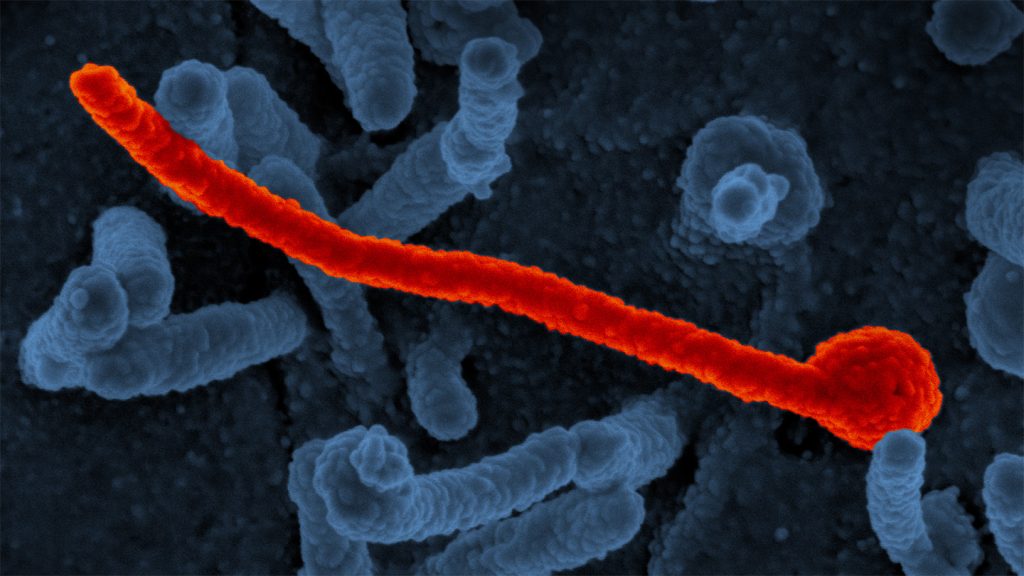A Promising New Approach to Fighting Viral Infections
In a groundbreaking study published in Science Advances on August 27, researchers have identified a potential new strategy to combat a wide range of viruses through targeting sugar molecules present on virus surfaces. This innovative approach could potentially revolutionize how we respond to viral outbreaks and future pandemics, offering a broad-spectrum solution where current antiviral treatments often target only specific viruses. The research team demonstrated remarkable success in preventing infections from deadly viruses including Ebola, Nipah, and SARS-CoV-2 in laboratory mice, suggesting a new pathway toward developing medications that could work against multiple viral threats simultaneously.
“This is an interesting study, showing a possible pathway towards broad-spectrum antivirals,” notes William Wimley, a biochemist at Tulane University School of Medicine who wasn’t involved in the research. “But there are still many optimization steps before we get there.” Indeed, creating broad-spectrum antivirals has historically been challenging because viruses mutate rapidly, making it difficult to develop a single drug effective against different viral families. However, the new approach tackles this problem from a different angle, focusing on a common vulnerability across many viruses rather than targeting virus-specific features that can easily change through mutation.
Lead researcher Adam Braunschweig and his colleagues from the City University of New York focused their attention on N-glycans – sugar molecules found on virus membrane surfaces that play a crucial role in how viruses attach to and penetrate host cells. What makes their approach particularly innovative is the recognition that these sugars attach to viruses using a common molecular linker. “These sugars are all attached to the virus using the same exact molecule as a linker,” explains Braunschweig. “We created molecules that targeted that linker.” By preventing these glycan molecules from attaching to viral particles, the researchers hypothesized they could stop viruses from entering cells, replicating, and spreading throughout the body.
The research team methodically tested 57 different synthetic carbohydrate molecules to find candidates that could effectively block the receptor used by glycan molecules to fuse with viral particles. Four of these molecules showed promise in initial tests. The scientists then moved to a more challenging environment, testing whether these molecules could prevent viral infection in living primate cells. The results were impressive – their approach successfully blocked cell infection from six different viruses spanning three unrelated viral families: Ebola, Hendra, Marburg, Nipah, SARS-CoV-1, and SARS-CoV-2. This broad effectiveness across diverse viral types suggests the approach targets a truly fundamental mechanism in viral infection.
Perhaps most compelling were the results when testing the treatment in mice infected with SARS-CoV-2, the virus responsible for COVID-19. In trials involving groups of eight to ten mice, a single dose of the new carbohydrate molecules resulted in a 90 percent survival rate among infected animals, while none of the untreated control group survived. Such dramatic results in animal models suggest significant potential for human applications, though the researchers acknowledge there’s still a long road ahead before these treatments could reach patients. The research team has continued expanding their testing to include additional viruses and expects to move these promising molecules into clinical trials by 2028.
The implications of this research extend beyond just fighting viruses. Braunschweig suggests that the mechanism for binding surface glycans could potentially be leveraged for treating cancers and immunological disorders as well. The timing of this discovery is particularly noteworthy, as it comes shortly after Columbia University researchers reported another broad-spectrum antiviral approach using mRNA to make host cells produce proteins with antiviral properties. “Maybe this is ushering in a new area of broad-spectrum antivirals,” Braunschweig says optimistically. However, Wimley cautions that significant challenges remain, particularly regarding the potency and range of action of these molecules before they can be developed into therapeutics for human use. “Most importantly,” he warns, “we need to know how quickly viruses will develop resistance.” Despite these reasonable concerns, this research represents an exciting new direction in our ongoing battle against viral diseases, potentially providing a powerful new tool to combat both existing viral threats and future pandemic risks.


